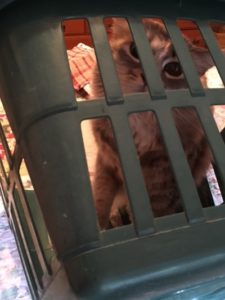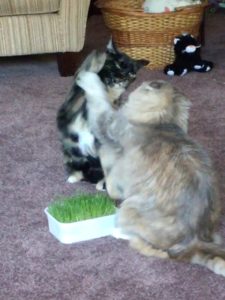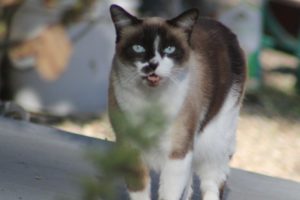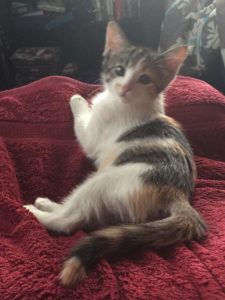 If you have more than one cat or if you’ve had many cats over the years, you know that cats come in many different sizes, shapes, styles, and purrsonalities. One Australian study has revealed five distinct personality types for cats. Let me know if you agree or disagree. After reading this article, I have to say that I’ve known cats with more than one of these traits, cats that changed their color (from skittish to friendly, for example), and cats outside of these distinct personalities.
If you have more than one cat or if you’ve had many cats over the years, you know that cats come in many different sizes, shapes, styles, and purrsonalities. One Australian study has revealed five distinct personality types for cats. Let me know if you agree or disagree. After reading this article, I have to say that I’ve known cats with more than one of these traits, cats that changed their color (from skittish to friendly, for example), and cats outside of these distinct personalities.
Here are the five that researchers have listed:
The skittish cat has a lot of fear. He hides from the things that he doesn’t understand, and he may not cope well in general. Sometimes this cat can overcome with help. This cat does best in a quiet home without small children. Be patient. Once he feels safe, he will generally relax a bit, but it can take some cats years to come around.
The dominant cat is pretty much a bully. He might push the other cats (and even dogs) around and keep them from access to the food bowls and the litter box. The best way to handle this situation is to provide multiple feeding stations and litter boxes. However an obsessed dominant might terrorize the other cats in the household by patrolling all of the food and litter boxes all the time. If there’s a skittish cat in the mix, she might begin to lose weight and avoid using the litter boxes. Maybe this isn’t a safe and sane match for your household.
around and keep them from access to the food bowls and the litter box. The best way to handle this situation is to provide multiple feeding stations and litter boxes. However an obsessed dominant might terrorize the other cats in the household by patrolling all of the food and litter boxes all the time. If there’s a skittish cat in the mix, she might begin to lose weight and avoid using the litter boxes. Maybe this isn’t a safe and sane match for your household.
 The spontaneous cat, according to the researchers, might be a real puzzle for its humans—you never know which cat will emerge in any given situation. She might react one way on one day to a lizard in the house, for example, and completely differently the next time she sees a lizard. She’s unpredictable and confused. I had a horse like that once. We called her Lightening. She might shy away from the white line in the street and walk right past a garbage truck without flinching.
The spontaneous cat, according to the researchers, might be a real puzzle for its humans—you never know which cat will emerge in any given situation. She might react one way on one day to a lizard in the house, for example, and completely differently the next time she sees a lizard. She’s unpredictable and confused. I had a horse like that once. We called her Lightening. She might shy away from the white line in the street and walk right past a garbage truck without flinching.
An outgoing cat is a joy if you like a lot of cat attention and entertainment. This cat is  curious, not afraid to explore new territory, and sometimes gets himself into trouble. He needs a lot of stimulation because he has a lot of energy.
curious, not afraid to explore new territory, and sometimes gets himself into trouble. He needs a lot of stimulation because he has a lot of energy.
The friendly cat is everyone’s dream. These cats were probably socialized properly as kittens. They’re calm and relaxed and don’t harbor fears. Smokey (my mother’s cat) could be considered a friendly cat. He always showed up when company came—loved being admired and petted by any and all humans. His biggest fear was missing a meal or the opportunity for a treat or a vigorous petting.






I have the Shy cat and the Dominant one right now. We’ve had the shy cat for 9 years and the dominant one for almost 7 now and the drama is much less then it used to be. Definitely multiple litter boxes help and I feed the cats in separate places and give the shy cat lots of time to finish. (She used to be a slow eater, but has sped up over the years). The family bed is also an issue, but during the day, they often share it. At night, they each take a turn at sleeping with us and that seems to keep both of them happy. I marvel at how much like kids vying for attention our pets are. So like us in so many ways.